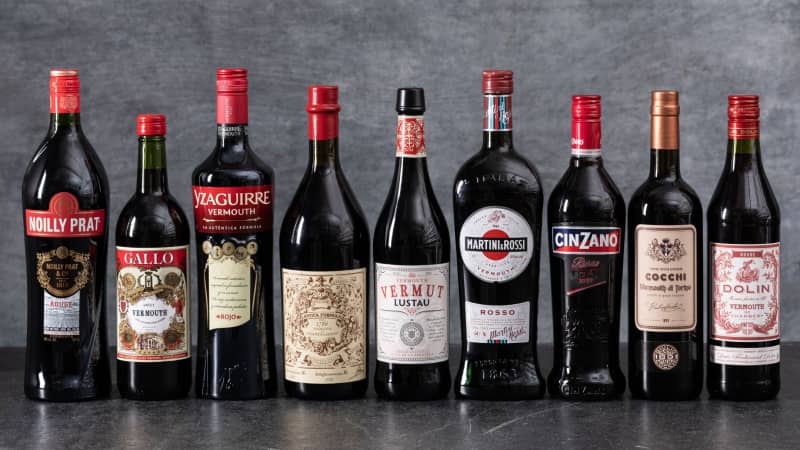The Best Dry Vermouth
Taste Test
Sweet vermouth is a drink steeped in tradition. Does it matter which one you buy?
Published July 9, 2019.

For years, sweet vermouth languished in American home bars, considered a quaint, old-fashioned ingredient to be dusted off and trotted out only when a Manhattan was requested. But in the last decade or so, it’s finally begun to receive the attention it deserves, both as an essential cocktail ingredient and as a wonderful drink that can be enjoyed on its own. More vermouths are now imported from Europe than ever before, and many new products are being manufactured here in the United States. With such a wealth of sweet vermouth now available to consumers, we decided to take a closer look at this beverage, tasting some of the most prominent and commonly available products from Italy, France, Spain, and the United States, priced from just about $6.00 to almost $30.00 for 750-milliliter or 1-liter bottles.
First, a little background. Sweet vermouth is a drink with a long and storied past. Historians say its roots lie in the Piedmont-Savoy region, an area just south of the Alps that encompasses parts of what is now northwestern Italy and southeastern France. Specifically, sweet vermouth is usually traced to Antonio Benedetto Carpano, a wine shop owner in 18th-century Turin, Italy, who sold a wine that he’d sweetened, spiked with a spirit, and infused with herbs, roots, spices, and other botanicals—including wormwood (from the German wermut), from which vermouth gets its name. Like many other drinks of its time, sweet vermouth was originally prized as much for its purported medicinal properties as for its virtues as an alcoholic beverage. Over time, however, its popularity as a drink greatly overshadowed its use as a therapeutic tonic. Vermouth became a common aperitif in France and Italy as well as in Spain, where la hora del vermut (“the hour of vermouth”) is essentially a synonym for happy hour and “Martini” refers not to the drink made with gin and olives but to the vermouth company Martini & Rossi and to sweet vermouth more generally.
Today, sweet vermouth is made very much as it was in Carpano’s time. Many European producers claim to have used the same formula for hundreds of years without making any changes, though their precise methods and ingredients are proprietary and rarely disclosed.
Regardless of its exact content or manufacturing, sweet vermouth is classified as a fortified, aromatized wine. That is, it is a wine that has been fortified (made stronger) by the addition of a spirit (usually a grain or grape alcohol) so that it reaches an alcohol by volume (ABV) of 14.5 to 22 percent. Before or after fortification, it is also aromatized (infused) with different botanicals. S...
The mission of America’s Test Kitchen Reviews is to find the best equipment and ingredients for the home cook through rigorous, hands-on testing.

Miye is a senior editor for ATK Reviews. She covers booze, blades, and gadgets of questionable value.

This is a members' feature.